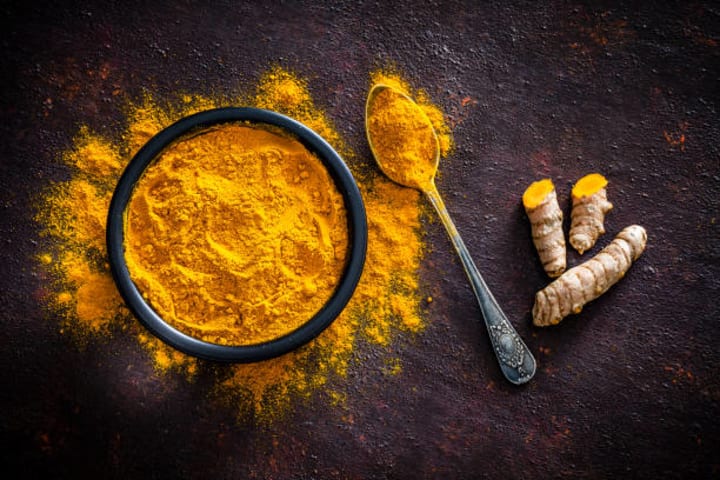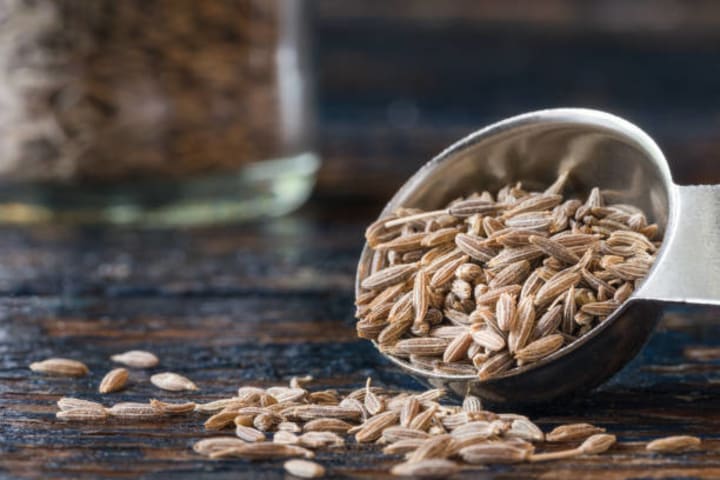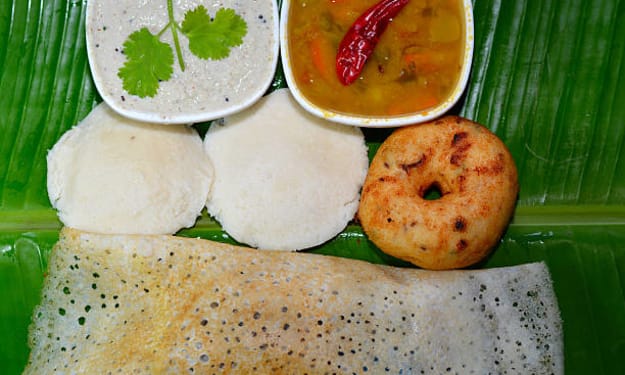Medicinal and Flavorful Indian Spices
Essential Spices for Indian Cooking

Indian cuisine is well-known for its extensive use of spices. Turmeric, cumin, coriander, ginger, garlic, cinnamon, cardamom, cloves, and black pepper are some common spices used in Indian cooking. These spices are frequently used in combination to create complex and flavorful dishes. Furthermore, many Indian regions have their own distinct spice blends, such as garam masala, which is commonly used in Northern Indian cuisine.
1. Turmeric

Turmeric is a popular spice in Indian and Middle Eastern cuisines. It is a member of the ginger family and is known for its bright yellow colour and earthy, slightly bitter flavor. It is commonly used to add colour and flavor to dishes such as curries, stews, and rice. Ayurvedic medicine makes use of turmeric's anti-inflammatory and antioxidant properties. The primary active ingredient in turmeric is curcumin, which is a powerful anti-inflammatory and antioxidant that has been linked to potential health benefits for conditions such as depression, cancer, and Alzheimer's disease. More research is needed, however, to confirm these potential benefits.
2. Cumin

Cumin is a spice found in Middle Eastern, Mediterranean, and Indian cuisines. It's made from dried cumin seeds and has a warm, earthy flavor with a slightly bitter aftertaste. It's commonly used to boost the flavor of dishes like curries, stews, and soups. Cumin is a key ingredient in a variety of spice blends, including chilli powder, garam masala, and baharat.
It also has antioxidant, anti-inflammatory, and antimicrobial properties and is used in traditional medicine for digestive purposes. Consuming cumin has been shown in studies to aid in the reduction of blood sugar and cholesterol levels. However, more research is needed to fully understand its potential health benefits.
3. Coriander
Coriander, also known as cilantro, is a widely used herb in Middle Eastern, Mediterranean, and Indian cooking. It is made from the leaves and seeds of the coriander plant and has a distinct fresh and citrusy flavor. The leaves are used to season curries, salsas, and salads, while the seeds are used to season stews, soups, and pickling.
Coriander has been used in traditional medicine for its anti-inflammatory properties, as well as to aid digestion and reduce bloating. Coriander seed oil has been found to have antimicrobial and antioxidant properties. Coriander is also rich in vitamins K, A, and C, as well as minerals such as manganese, potassium, calcium, and iron. More research, however, is required.
4. Ginger

Ginger is a spice and medicinal herb popular in Asian and Indian cuisine. The ginger plant's underground stem (rhizome) has a warm, spicy flavor and a pungent aroma. It is commonly used to season curries, stir-fries, marinades, and teas. It is also used in traditional medicine for its anti-inflammatory and antioxidant properties, as well as for digestion, nausea and vomiting relief, and pain and discomfort relief. Gingerols, shogaols, and paradols are the main bioactive compounds in ginger that are responsible for its medicinal properties.
Ginger has anti-inflammatory and antioxidant properties, and it may aid in the reduction of blood sugar levels as well as muscle pain and soreness. More research, however, is required.
5. Garlic
Garlic is a popular herb and spice in many cuisines around the world, particularly Asian, Mediterranean, and Indian. It is a bulbous perennial plant with several cloves. It has a strong and distinct flavor that is spicy and sweet at the same time. It's popular for seasoning curries, stir-fries, soups, and sauces.
Garlic is known for its antimicrobial, antioxidant, and anti-inflammatory properties in traditional medicine. It may also help lower blood pressure and cholesterol levels, reduce the risk of heart disease, and boost the immune system. The majority of garlic's medicinal properties are thought to be due to the bioactive compounds allicin and diallyl sulphides.
6. Cinnamon

Cinnamon is a popular spice in both sweet and savoury dishes and beverages, particularly in Asian and Middle Eastern cuisines. It's made from the inner bark of Cinnamomum trees and has a warm, sweet, and slightly spicy taste. It's commonly used to season curries, stews, and baked goods, as well as beverages like tea and coffee.
Cinnamon is also known for its medicinal properties and has been used in traditional medicine for centuries. It's anti-inflammatory, antioxidant, and antimicrobial. Cinnamon contains a lot of manganese, iron, and calcium. Cinnamon consumption, according to some studies, may help to lower blood sugar levels, reduce inflammation, and improve overall health.
There are two types of cinnamon: Ceylon and Cassia. Ceylon cinnamon, also known as "true" cinnamon, has less coumarin than Cassia cinnamon, which is more commonly found in the United States.
7. Cardamom
Cardamom is a spice used in Indian, Middle Eastern, and Scandinavian cuisines. It is made from ginger plant seeds and is well-known for its distinct, complex flavor that is both sweet and slightly pungent. It's commonly used to season curries, stews, and baked goods, as well as beverages like coffee and tea. It is also a key ingredient in many spice blends, including garam masala.
Cardamom is also known for its medicinal properties and has been used in traditional medicine for centuries. It is anti-inflammatory, antioxidant, antimicrobial, and diuretic. Cardamom consumption may help lower blood pressure and inflammation.
Cardamom is available in two colours: green and black. The most common is green cardamom, which has a more delicate and fruity flavor than black cardamom, which has a more smoky and intense flavor.
8. Cloves

Cloves are widely used in Indian, Middle Eastern, and Asian cooking. The dried, unopened flower buds of the Syzygium aromaticum tree have a strong, pungent, and slightly sweet flavor. They are commonly used to season dishes like curries, stews, and marinades, as well as beverages like tea and coffee. Cloves are also a key ingredient in many spice blends, including garam masala.
Cloves have been used for centuries in traditional medicine for their anti-inflammatory, antimicrobial, and analgesic properties. Clove oil has traditionally been used to treat toothaches, sore throats, and indigestion, and eugenol, a compound found in cloves, has anti-inflammatory and pain-relieving properties. Cloves also have vitamin K, C, manganese, and magnesium.
9. Black pepper
Black pepper is a spice that can be found in almost any cuisine on the planet. It has a strong, pungent, and slightly spicy flavor and is made from dried, unripe berries of the Piper nigrum plant. It's commonly used to flavor dishes like curries, stews, and marinades, as well as beverages like tea and coffee.
Black pepper has been used in traditional medicine for its anti-inflammatory and antioxidant properties. Piperine is the main bioactive compound in black pepper that gives it its pungent flavor. It also has potential health benefits such as increased nutrient bioavailability, improved digestion, and decreased inflammation. Black pepper also contains a lot of vitamin K, C, manganese, and iron.





Comments
There are no comments for this story
Be the first to respond and start the conversation.